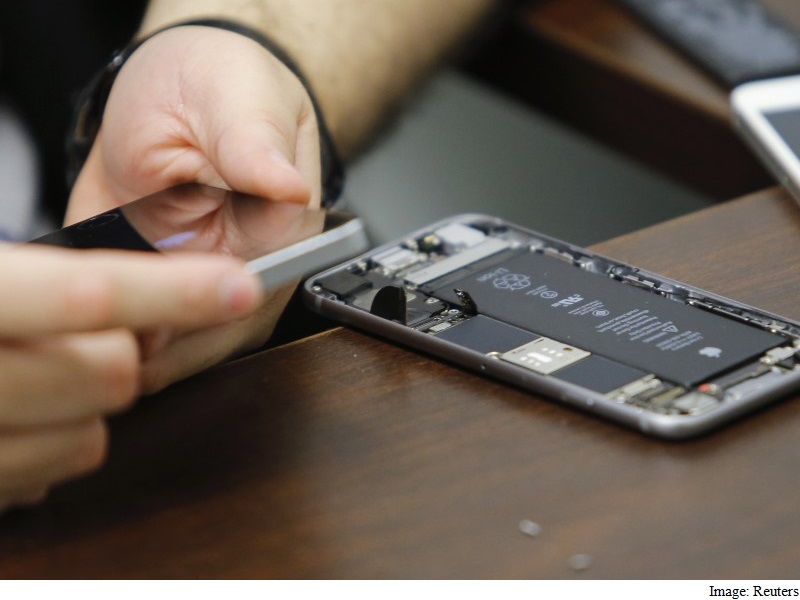The FBI has found no links to foreign terrorists on the iPhone of a San
Bernardino, California, terrorist but is still hoping that an ongoing
analysis could advance its investigation into the mass shooting in
December, US law enforcement officials said.
For instance, geolocation
data found on the phone might yet yield clues into the movements of the
shooters in the days and weeks before the attack, officials said. The
bureau is also trying to figure out what the shooters did in an
18-minute period following the shooting.
Investigators knew all
along that finding important clues on the phone, which was a work phone
owned by San Bernardino County, was a long shot, officials said, but
they wanted to make sure their inquiry was thorough.
"For the FBI
to competently investigate a mass murder that happened in the United
States, we believed we had to use all lawful tools to find out whether
there was evidence on that phone that either shed more light on what
these two killers had done," FBI Director James B. Comey said at Ohio's
Kenyon College last week.
Last month, a third party - professional
hackers who hunt software flaws to sell - demonstrated to the bureau a
method for unlocking the Apple iPhone of Syed Rizwan Farook, one of the
shooters in the attack that killed 14 people.
The method proved
successful, officials said, but it has not so far turned up anything
that sheds new light on the motive of Farook and his wife, Tashfeen
Malik, or whether they were plotting other attacks or had other
associates. The couple were killed in a shootout with police after the
attack on a county facility in San Bernardino.
The lack of significant information on Farook's phone was first reported by CBS News.
The
phone was one of three recovered by the bureau. Two were damaged beyond
repair, and the third, Farook's iPhone 5c running an iOS 9 operating
system, was locked with a personal identification number that Apple
could not bypass or unlock. The phone also had security features,
including one that would delete all the data on the phone if more than
10 incorrect guesses at the PIN are made. Another feature imposed delays
of increasing duration between guesses.
In particular, the bureau
wanted to know if there was data on the phone that was not backed up in
Apple's servers. Farook had stopped backing up the phone to those
servers in October, six weeks before the attack.
The bureau has not commented on the identity of the individuals who helped the US government crack Farook's phone.
"The
people we bought this from - I know a fair amount about them, and I
have a high degree of confidence that they are very good at protecting"
the solution, Comey said.
(Also see: FBI Paid Hackers to Get Data From Shooter's iPhone)
The FBI's analysis of the phone's data
so far is consistent with Comey's statement in December that the bureau
had not uncovered any ties between the shooters and foreign terrorist
organizations.
Last week, FBI General Counsel James A. Baker was
asked at a privacy conference whether the data found on the phone was
"worth the fight" over unlocking the phone that the government and Apple
engaged in. That fight ended when the third party came forward.
"It
was worth the fight to make sure that we have turned over every rock
that we can with respect to the investigation," Baker said. "We owe it
to the victims and the families to make sure that we have pursued every
logical lead."
© 2016 The Washington Post
 Apple's Foldable iPhone to Sport Display With Same Aspect Ratio as iPad Models, Tipster Claims28 March 2025
Apple's Foldable iPhone to Sport Display With Same Aspect Ratio as iPad Models, Tipster Claims28 March 2025 Google Play Store Blocks 17 Unregistered Crypto Exchanges in South Korea, Apple May Follow27 March 2025
Google Play Store Blocks 17 Unregistered Crypto Exchanges in South Korea, Apple May Follow27 March 2025 iPhone 17 Series to Reportedly Get 8K Video Recording Support27 March 2025
iPhone 17 Series to Reportedly Get 8K Video Recording Support27 March 2025 Apple iPhone 16e Review: When You Just Need an iPhone27 March 2025
Apple iPhone 16e Review: When You Just Need an iPhone27 March 2025 Apple Appoints Global Head for Its Retail Stores in Latest Management Shift27 March 2025
Apple Appoints Global Head for Its Retail Stores in Latest Management Shift27 March 2025



![Gadgets 360 With Technical Guruji: News of the Week [March 29, 2025]](https://c.ndtvimg.com/2025-03/9cu1890s_news-of-the-week_160x120_29_March_25.jpg?downsize=180:*)










